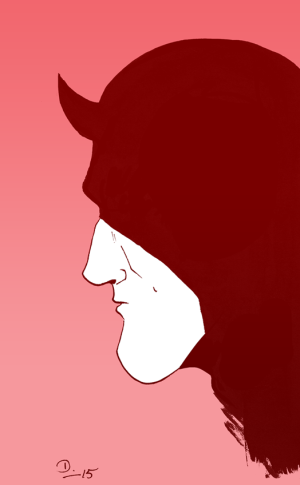Podcast: Play in new window | Download
Netflix, Amazon, and Hulu are in the process of revolutionizing television and, frankly, it’s a welcome uprising. Their respective models vary slightly, but it all revolves around a bedrock concept: consume media how you want. Netflix kind of led the charge on this by offering full seasons of shows to stream creating the “binge effect” of which our society is fully in the throes. Knowing that was how people consumed content on their service, it only made sense that their original content would follow suit. This is, however, where the seams start to show and this wave of new, binge-possible content is immediately dead upon arrival because of the very nature of its release.
A recent, high-profile, and celebrated original show on Netflix was the high-interest Daredevil, which the industry earmarked as being Marvel’s (and Netflix’s, to an extent) next big gamble. Perhaps not surprisingly, given both the track record of Marvel and Netflix, reviews have been stellar (at least in nerdy quadrants), but the language of a few of the reviews surprised me quite a bit.
One particular review referred to the show in the preterite––making statements similar to: “Netflix’s Daredevil was a show that made a lot of bold choices,” for example (though not an actual quote)––using past tense language to discuss a show which had only just premiered a few days before. Normally, a review taking place that close to the debut of a show would be full of hopeful or, at the very least, circumspect language––looking forward to what the show could bring––but Daredevil and shows like it may be changing the way we speak about television. Sadly, I can’t find this review to refer to, but, according to the implied sentiment, because Daredevil’s entire season could, technically, be watched in one go on the day of its release, then it only follows that the season is over, since that is when we constitute the end of a television season: when all episodes have been released and consumed. Something that was much more organic with regard to audience consumption and participation––happening week to week over the course of almost a half-year in some cases––is now instantly begun and completed.
With the full order of episodes dropping at the same time, what this means is that a season is “over” as soon as it’s released (though, of course, it’ll take at least 13 tv hours to watch, but that’s not the point). This is, of course, one cause of the binge effect because the requirement for water cooler talk is much increased from what it used to be with the week-to-week release schedule. I find it strange that with this greater workload comes a shorter shelf life: doing more for less, basically.
While the use of the past tense in the article could have been accidental, it is iterative of this changing climate with regard to how we approach streaming television. If we follow the ideas set forth by the language philosopher, J. L. Austin (concisely delivered in his wonderful book, How to Do Things With Words), in that language itself is performative––that is the words we say can create action just by speaking or writing them (for example, saying “I promise to…” do something in a sense creates the action of doing whatever it was you promised to do), then even the accidental use of the past tense to describe a new show is telling (but for what it’s worth, the use the past tense in the article wasn’t accidental). Even if it’s not how we think––even if it’s not how we will think––of this new mode of television, what’s new is that we can think of television this way, which is endemic of the culture at large and how we consume information.
In a sense, this binge-style of writing and presentation seems to be pushing television into realms previously occupied by novels or movies: a singular experience, usually done in one (or a few) sittings. While I don’t think this is a lamentable shift, it is an unexpected one as it speaks to the new purpose that television has in our lives. Televised storytelling is maturing and people are paying attention and want more out of their tv shows. No longer is it the reliable weeknight distraction that it used to be––to tune in and turn off the brain, so to speak––it has become a worthy medium for art and expression, even if it is meant to be consumed faster than ever before and is––through the lens of critical discussion––over as soon as it starts.
NOTE: This was originally written and recorded for Episode 52 of D. Bethel’s weekly nerd/geek podcast, A Podcast [ , ] For All Intents and Purposes. This version is revised and expanded, however. If this interested you, you can check out the podcast through the player in the “Links”>”D. Bethel’s Work” section on this website, or you may subscribe on iTunes.



